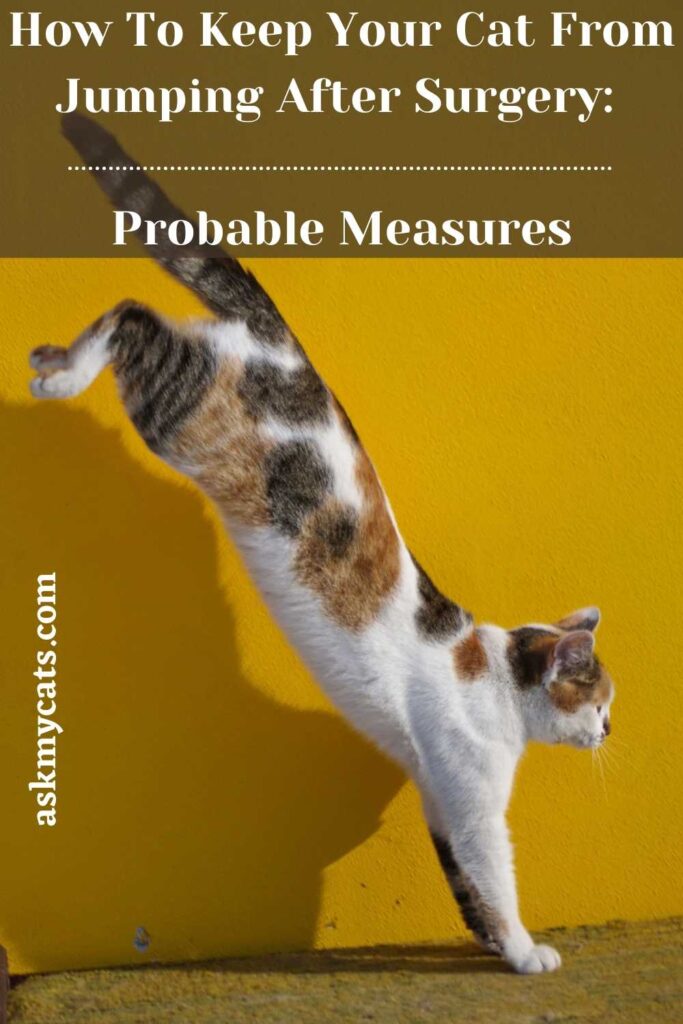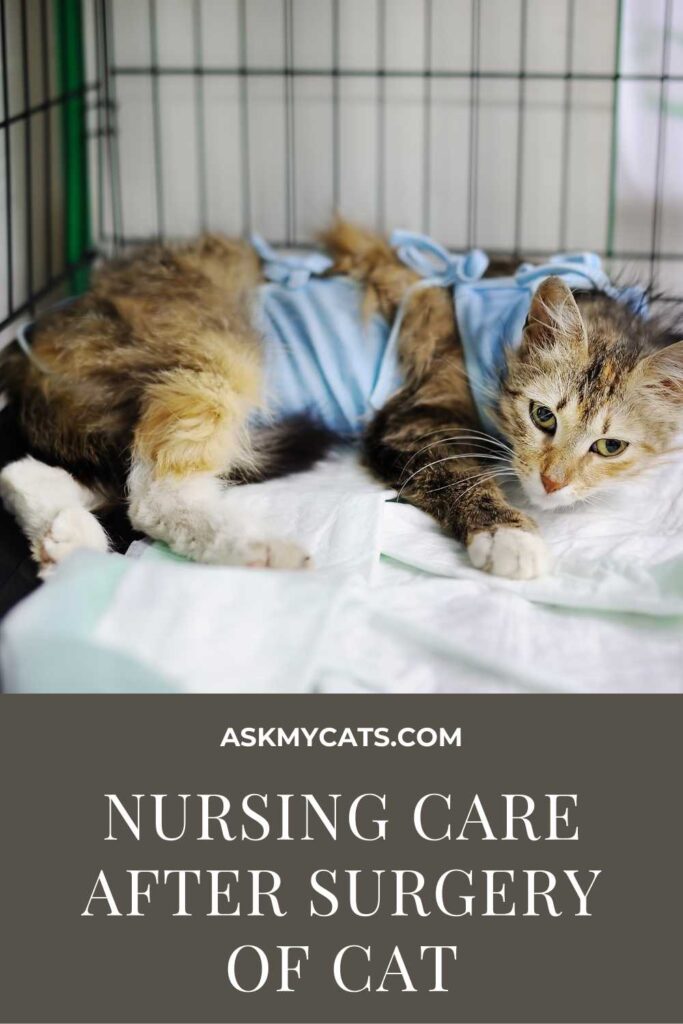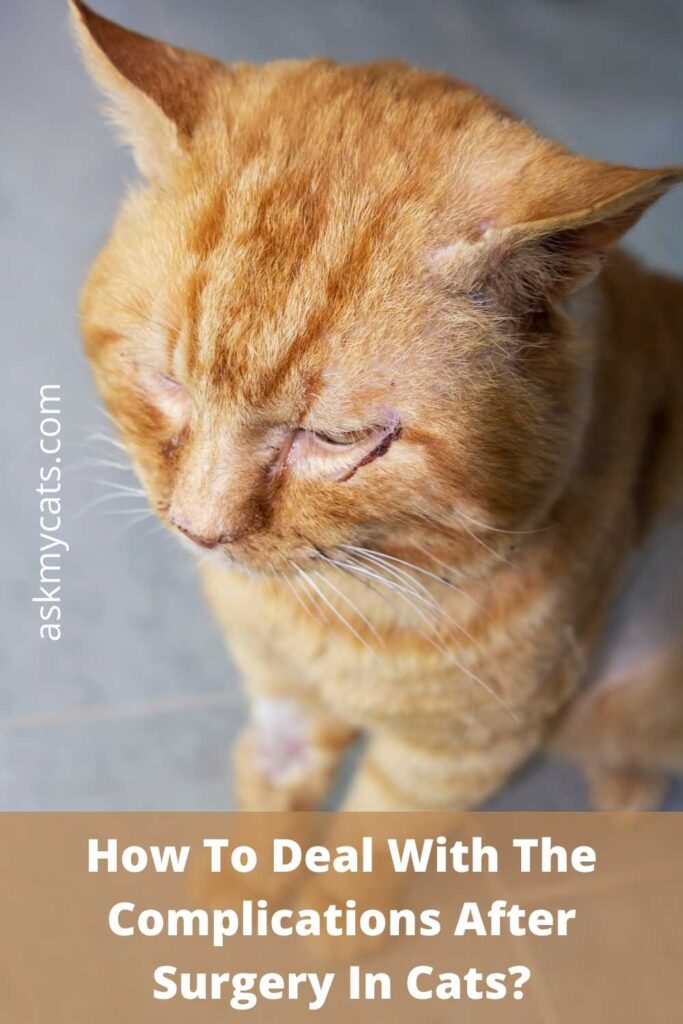Cats aren’t known for being very cooperative. In fact, the opposite is true. So, when it comes to figuring out how to look after your cat after a neuter or spay, you’ll want to make sure you’re prepared.
Nobody enjoys doing surgery, the smallest of all cats. Regardless of the problem at hand, it’s a frustrating experience for everyone involved.
Furthermore, some kitties are known to become more active after surgery. It’s up to you how long you have a cat contained after they’ve been spayed, but it must be at least 24 hours. Allow kitty to rest for a while.
You can keep a cat in a cage to avoid him from jumping after surgery. Confining the cat in a cage will help him to get himself protected and restricted. He is not allowed to jump here and there and climb to heights. Monitoring his movements will actually bring fruitful results for his own good.
If your pet has broken a bone or has been spayed or neutered, it is important that they rest for a while. The post-op recovery time could take much longer than expected if they keep up their usual antics.


Give Your Cat the Perfect Day
Get the Free Ebook!
How To Keep Your Cat From Jumping After Surgery: Probable Measures

1. Maintain Vigilance
This is self-evident, but it must be said. I have a few friends who have let their cat out of sight for a few minutes only to be confronted with disaster.
Depending on the procedure, the pet can be placed under an anesthetic. This ensures that your pet’s grace and agility will be offset by drowsy clumsiness.
As if you’re a toddler who has just learned to walk and is attempting to avoid nap time.
Keeping a close watch on what’s coming will help you see it and stop it.
The easiest way to do this is to have your pet with you in a small enclosed room with no furniture to climb on.
2. Take Down All Cat Trees
It’ll only create trouble if you keep your cat tree upright and visible. Either your cat notices it and remembers that jumping hurts, or she leaps regardless, and you’re back in the car on the way to the doctor.
Depending on how much space you have, you can quickly solve the issue by laying the tree on its side. You should even leave it outside if the weather is good until your kitty is completely healed.
Another solution is to simply cover the cat tree with a blanket or tarp. It won’t be pretty, but it’ll just be for a short time.
3. Keep The Cat Inside The Building
Some cats are more self-sufficient than others. This move will be a bit more difficult if your cat wants to socialize with the neighbors during the day.
Naturally, the feline has become used to getting her way anytime she wishes. And she might not be happy if you restrict her freedoms.
However, in the postoperative period, having your cat on free roam mode is impossible. Who knows what happens when you aren’t around?
It’s possible that your cat competes in the community pole vault race. Hold your cat indoors following surgery if you wish them to avoid jumping.
4. Keep The Cat Out Of The Company Of Other Cats
Other Cats can be attracted to the cat’s incision. You can’t risk another animal chewing or chewing at your cat’s newly healed wound, can you?
If you have several cats or animals in your home, you’ll want to pay special attention to this section. Fights between cats have been known to occur, and your post-op kitty will certainly bear the brunt of such an exchange.
If a cat is shocked or threatened, it may bite, hop, and claw, so prevent war at all costs.
For the duration of your rehab, it’s safest to separate your dogs into various rooms in the home.
5. Obtain A Cone
Have a pit stop at the pharmacy on the way home if you didn’t get one at the vet. You’ll be happy you did, believe me.
The primary function of a cone is to prevent the incision from being bit, licked, or scratched. Your cat would undoubtedly despise it, but it is extremely effective in this respect.
A cone, on the other hand, has been shown to discourage any excessive jumping or irregular activity in general. Your cat would be uneasy and unbalanced.
The cone, when combined with the anesthetic, will make it less possible for your cat to check out high areas.
You might also like to read about how long to keep cone on cat after spay
6. Maintain A Calm Environment For Everyone
The more people and animals you have in the home, the more difficult it will be. It’s not easy to get the kids to stop fighting or the birds to stop squawking, but your healing pet would thank you.
Surgery is a very painful procedure. Your cat was ripped from her natural habitat, cut open, and forced to spend the night in an unfamiliar location with noisy neighbors. Could you blame her for wishing for some alone time?
Your pet would find it much easier to rest and sink into the tranquility of their anesthetic without all the additional stimuli. She’ll be far less likely to get herself into trouble or over-exert herself, causing more damage.
7. Make Use Of A Crate
I put this one last because I like to keep crate time to a minimum. It’s cruel and wasteful to confine your pet for hours daily.
That being said, a post-op kitty is extremely vulnerable, and this is an exception to the law. If everything else fails and your pet continues to jump around like a lunatic, a cage is your safest chance at keeping your cat isolated after a spay.
You can’t always keep an eye on your cat, either. If your cat is always unable to calm down, it’s a smart idea to keep him in the cage while you’re not home.
Most pet owners despise crates, but it’s only for a short time! First, I want to try holding my kitty next to me in a tight room. This way, your cat retains some independence as you enjoy peace of mind.
8. Medication And Attention
Keeping all of these suggestions in mind is critical to ensuring your loved one’s complete and speedy recovery. Make sure you pay attention to the veterinarian and follow their directions to the letter.
If your cat was given drugs, follow the directions carefully and don’t avoid offering it unless otherwise advised. You don’t want your pet to suffer from injury or irritation that could be prevented.
Your cat may be too groggy to even consider leaping after you’ve given him the medication. However, this isn’t always the case. In any case, make sure they get plenty of rest and relaxation. Some cats get starving and demand food right away, while others need a bit more time.
Interesting Read: Can I Feed My Cat After Neutering?
Don’t be concerned if your cat doesn’t eat right away; this is completely natural.
It’s also important to treat the pet with caution so that the incision doesn’t get messed up. If at all possible, avoid picking them up.
Last but not least, lavish extra affection and care on your little hairball! It won’t assist with physical healing, but it will definitely help with the agony and confusion you’ve been experiencing for the last 24 hours.
It’s also very important to know how long to keep cat confined after spay
Nursing Care After Surgery Of Cat

After you get home, make sure your cat is warm and comfortable by having a soft, clean bed in a dark, draft-free space with a cool room temperature (25°C).
Your cat should be kept indoors. Your cat’s movement can be limited for one week after surgery for most procedures.
Driving, climbing, and other strenuous activities can be avoided because they will put too much pressure on the wound.
You should give your cat about half of his usual dinner a few hours after you get home.
If she still feels hungry after eating this, you can give her the remainder of her meal about an hour later.
After general anesthesia, some cats feel nausea, so splitting the meal into smaller portions can reduce the risk of nausea and vomiting.
Interesting Read: Cat Not Eating After Spay: Reasons & Solutions
Potential Problems After Surgery For Cats

Complications occur in the same way as injuries do. Complications are to be feared, and they can range from rashes to death.
The cat, the operation, and the surgeon are all things to think about.
When a pet’s e-collar is off, it can cause complications by being too active or biting at their sutures.
Also, check out why my cat is very active after surgery
When there is more “time, litter, and trauma,” surgery is considered to have more complications.
Procedures should be kept as brief as possible to inflict as little trauma as possible.
Wounds that are infected cause more symptoms than stable skin.
The wound should be kept as sterile as possible, and any dead or contaminated tissue should be discarded. A skilled surgeon must be mindful of the risks and know how to manage them.
The following are minor issues that could happen in the cat after surgery:
- Mental illnesses like Depression
- Dehydration
- Appetitelessness
- Anesthesia-induced vomiting
- Diarrhea.
- The endotracheal tube irritated coughing.
- Anesthesia-induced drowsiness
- The tissue surrounding the incision is red and itchy.
Interesting Read: Can I Bathe My Cat After Neutering Or Spaying?
How To Deal With The Complications After Surgery In Cats?

Be ready for a slew of issues. Following anesthesia, your cat can vomit. Because of the discomfort, your cat can refuse to eat.
Anesthesia and surgery have different effects on different pets. If you have concerns about your pet’s health, call or have your pet examined by a veterinarian.
Our hospital does not need an appointment; just walk in and your pet will be seen right away.
Simple measures such as a warm compress or extra pain medications could be enough to alleviate the issue.
Sutures that have been chewed out or are off for other purposes may need to be replaced as a result of complications.
If you notice the incision is opening, have it examined by a doctor right away to avoid the serious complications of herniated tissue and infection.
Consult a veterinarian right away, no matter what the issue is, to decide the proper course of action.
You must like to read details about How To Keep Cat From Jumping Over Gate
Frequently Asked Questions
How long after surgery can a cat jump?
Your cat should be kept indoors. Your cat’s movement can be limited for one week after surgery for most procedures. Rolling, climbing, and other strenuous activities can be avoided because they will put too much pressure on the wound.
Should cats jump after being spayed?
For the first week after surgery, you do not encourage him to climb stairs, run, hop, or even play. Allowing freshly neutered/spayed cats to run around too often will cause the cut to heal more slowly. To be on the safe side, confine your pet to a small space, a cage, or a carrier.
Why is my cat twitching after surgery?
This is not unusual and maybe a side effect of the anesthetic rubbing off, which could go away within 24-48 hours, or fear. Remember that your pet is completely unaware that he or she has had surgery.
Is it normal for cats to sleep a lot after surgery?
Your pet will need special care and treatment when recovering from sickness or surgery. She’ll need a lot of rest, food, and quiet. During her rehab, you’ll find that she seems frail and spends more time resting or sleeping than normal.
How long does it take anesthesia to wear off in cats?
With today’s anesthetics, all of which are reversible, the pet can be almost entirely normal by the time of discharge, but many pets will sleep more or be more exhausted after going home for 12 to 24 hours.
How long does it take for a cat to recover from being spayed?
The majority of spay/neuter skin incisions recover completely in 10–14 days, which is also when the stitches or staples if any, must be removed. Bathe or swim with your pet only after the stitches or staples have been removed and the doctor has given you permission.
Final Words
During the first week after surgery, you should not encourage him to climb stairs, run, jump or even play. If the cats are too neutered or spread, the healing process could be slowed down.
It’s important to keep the cat in a small space, in a box, or in a carrier to be on the safe side. Do not hurry to treatment. Do not rush to recovery. It is much safer to let your cat relax all week long.
Do let us know your stories in the comments section below.
Interesting Read: Why Is My Cat Hiding After Being Spayed?
